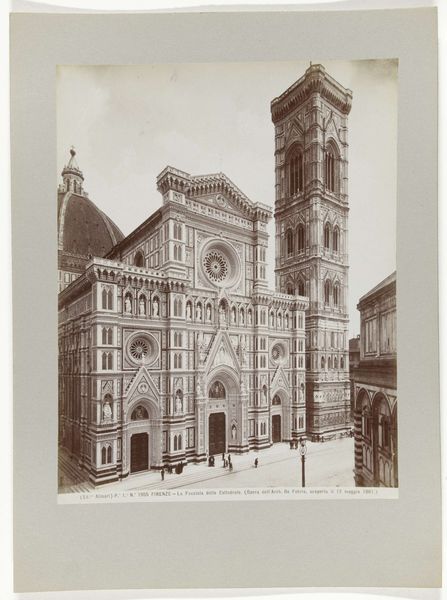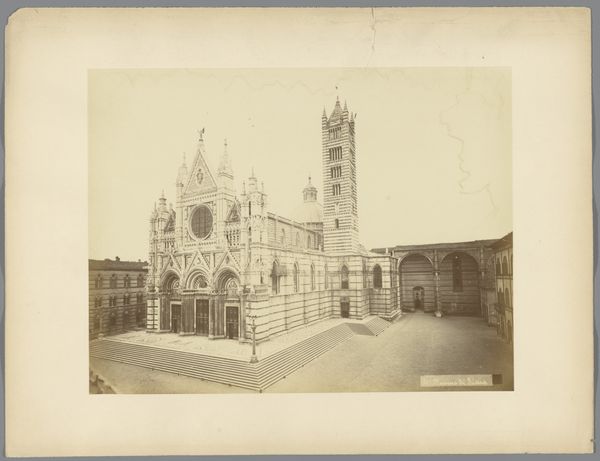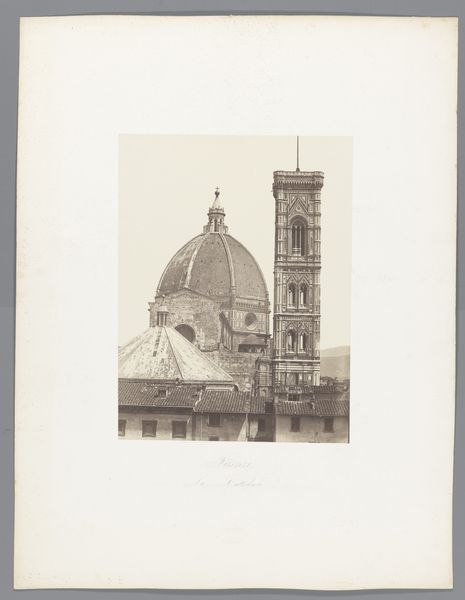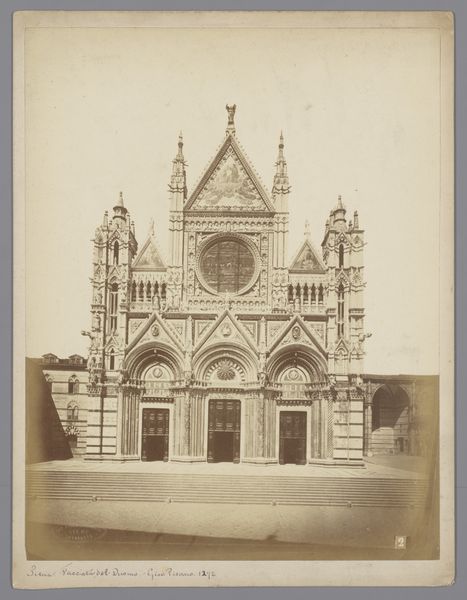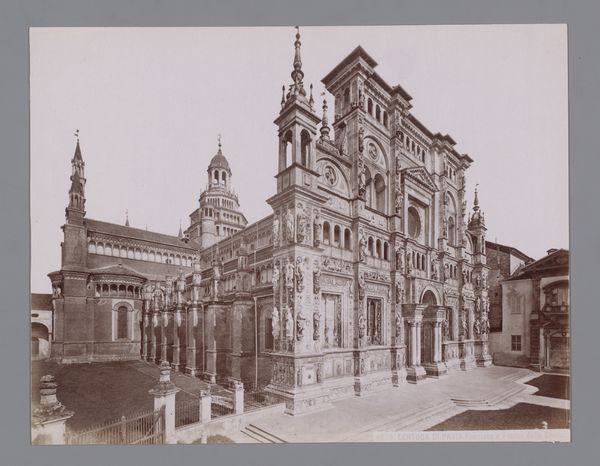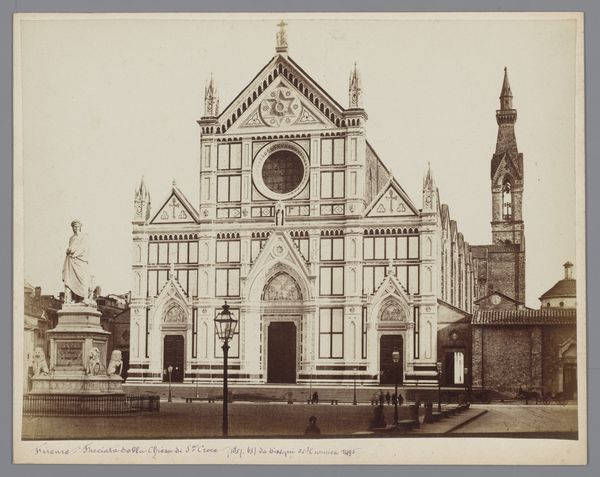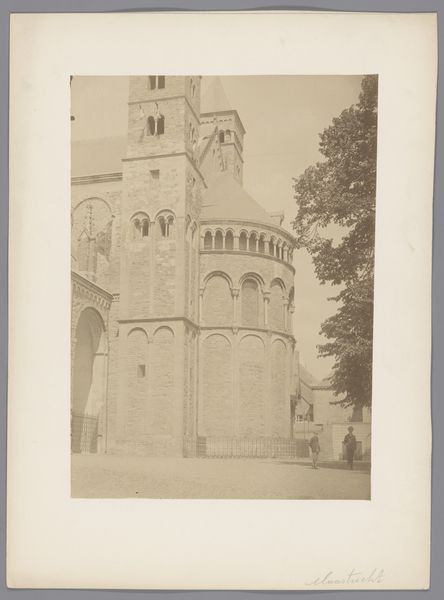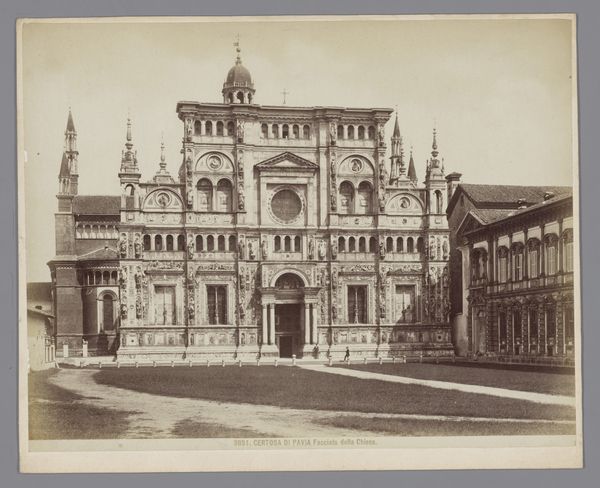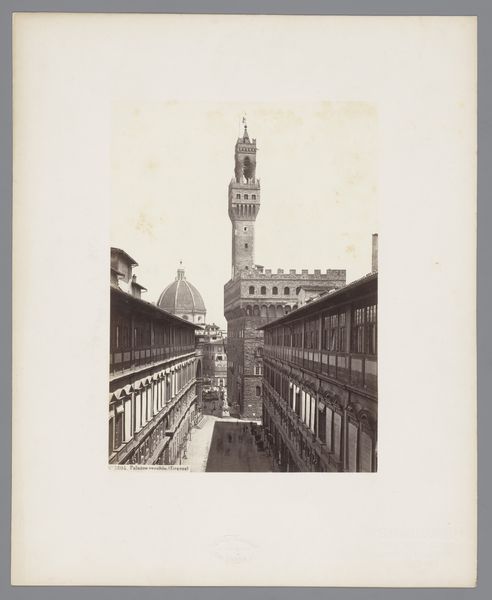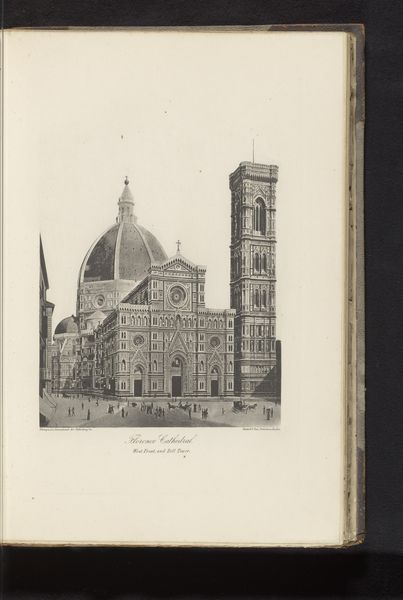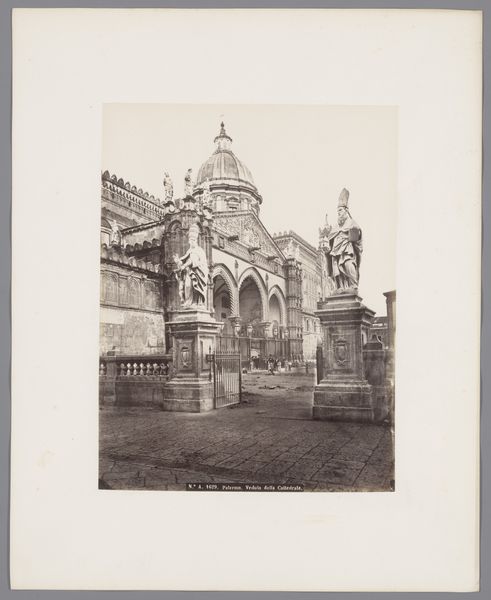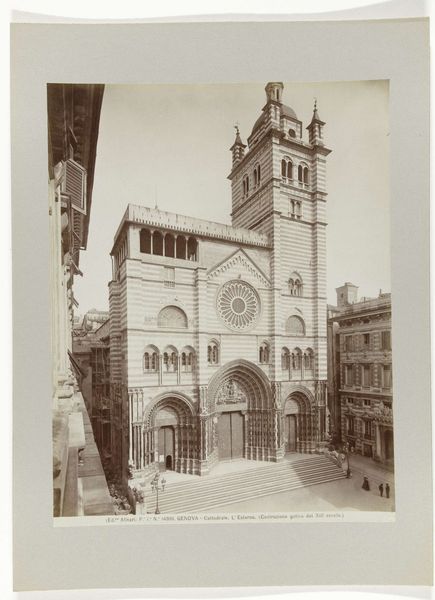
Dimensions: height 444 mm, width 318 mm
Copyright: Rijks Museum: Open Domain
Curator: Here we have a gelatin-silver print by Giacomo Brogi, taken sometime between 1864 and 1881. It depicts the entrance and campanile of the Florence Cathedral. Editor: My first impression is of order, isn't it? A rational grid imposed on this majestic structure. Even in monochrome, one senses the intricacy of its façade and a distinct sense of permanence, despite the medium of photography which hints at a moment captured. Curator: Brogi, working in the late 19th century, understood the power of photography to document and disseminate cultural heritage. He presented the Cathedral not merely as a building, but as a symbol of Florentine civic pride and historical continuity, a focal point for both religious practice and collective identity. Think of how the architecture asserts a visual narrative that continues to be engaged with, and how class and gender performativity intersect with urban life at the doorstep. Editor: Absolutely, and by the choice of such a large, important, public facing work such as a church, one could argue Brogi is directly implicating religion in Italian society, making this piece political by extension. One also has to think about the function of art such as this in reinforcing class structures that existed during this era. Curator: Indeed, we must consider the cathedral as an instrument of social control and how that translates into its architectural presence and its representation. Brogi’s photograph freezes this relationship. Even in what feels like an objective architectural view, there are inherent power dynamics visible, in where the photo is positioned to what it displays. Editor: Thinking about it that way also adds depth to how we interpret how architecture acts to represent systems and structure our realities in ways not always noticeable from the exterior, which Brogi exposes to the viewer in his capture. Curator: Examining it through this lens allows us to unpack not just what's presented, but also the underlying structures that contribute to our comprehension of space, authority, and cultural narratives. Editor: It shifts our perspective. This seemingly straightforward photo becomes a fascinating point of engagement to dissect complex historical and sociological considerations that have shaped our built environment. Thank you for shedding light on such insight today.
Comments
No comments
Be the first to comment and join the conversation on the ultimate creative platform.
